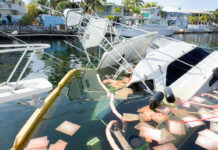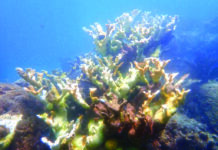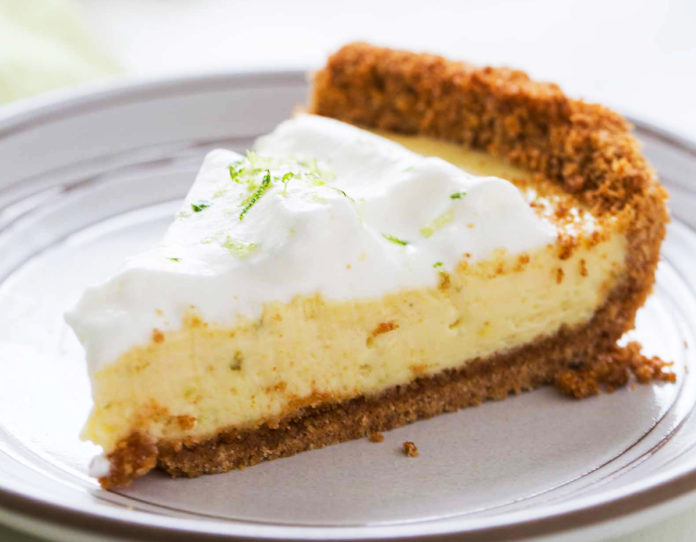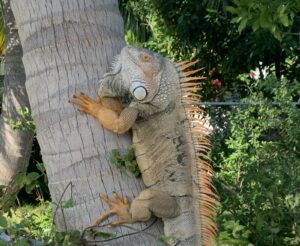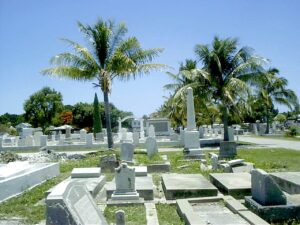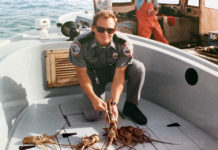Say “gracias” and tip your hat to Mexico next time a tart and tangy slice of Key lime pie throws a fiesta in your mouth. The Florida Keys may have provided the most marketable name for the dessert made from the juice of Citrus aurantifolia, but none of it would have happened, then or now, without the help of our friends south of the border.
Citrus aurantifolia (Key limes) originated in Southeast Asia and traveled the world to Mexico. They liked the location and thrived. In the 1830s, Dr. Henry Perrine was working in Campeche, Mexico, and believed the limes could be an important crop in the United States. He shipped plants and seeds to the Florida Keys around 1835 and started planting on Indian Key shortly after. Dr. Perrine spread Mexican lime seeds to neighboring Keys for a few years, but was murdered in a brutal attack by natives. Though his mission was cut short, it was still of great significance. Fruiting lime trees are noted in an 1840 Key West journal, and other documents indicate they were used in following years by sailors and local cooks, paving the way for the lime to blossom into a commercial crop. Perrine’s Mexican lime fiesta was a Florida Keys success.
The earliest reference I’ve found to limes being shipped from the Keys appeared in an 1895 edition of The Florida Agriculturist. It describes the schooner Pearl arriving in Biscayne Bay with pineapples and limes and notes, “limes are now being shipped in large quantities, the bulk of them going to Eastern markets via Key West and steamer. Limes are bringing extraordinarily good prices … some selling as high as $2 per peck crate.” This would mark the beginning of several fruitful decades of commercial lime production, despite some challenges.
The terrain of the Florida Keys is lousy for commercial farming. The combination of acidic limestone, salt air and little topsoil set the stage for pineapples to be king crop at the turn of the century, but this fruit faced problems too. Keys historian Brad Bertelli tells of pineapple blights in 1906 and 1909, which he suspects were the result of saltwater intrusion from storms. Flagler’s railroad started sourcing better quality pineapples from Cuba when this happened and it paved the way for more commercial Key lime groves.
By 1914 the Key lime crop netted owners about $200,000, with limes selling for $10 to $17 per barrel. By 1917 there were 183 acres of lime groves in the Upper Keys and 60,000 crates were shipped that year. Supply could not keep up with demand, and The Orlando Morning Sentinel reported that Key limes rarely made it as far west as Texas or as far north as the Carolinas. This opened the gates for competition and in 1926, a perfect storm marked a turning point for commercial Key lime production.
The Great Miami Hurricane of 1926 devastated commercial lime crops in the Keys. Limes were now proven to be profitable and in high demand, but Key limes didn’t grow well anywhere in the United States and Florida except the Florida Keys, and the rest of The Sunshine State wanted a piece of the action. California was having some success with a lemon-lime hybrid called the Persian lime, so savvy farmers in Dade County started planting them and met with great success. Lime imports from Mexico were driving prices down at the same time, so when the Overseas Highway opened in 1928, many of the suffering lime growers realized they could make more money taking tourists fishing than they could harvesting limes. In time, many of their lime groves were subdivided and sold for development.
There were a few holdouts who salvaged their groves to supply a decreasing market. Bartenders preferred Key limes to Persian limes because they were more flavorful and their smaller size was more conducive to cocktail preparation. A lime tariff inserted into the Tariff Act of 1929 helped level the playing field with imports too, but the Key lime was fighting a losing battle. Big money marketing campaigns for the Persian lime convinced consumers it was superior to the Key lime, and today it is the only lime most people know.
A 1965 Miami Herald article about Key limes reported a drought that year hurting the “declining crop.” It also noted. “Most Key limes today are grown on trees in yards of homes.” Fast-forward to present day Florida Keys, and finding a Key lime tree in someone’s yard, or even fruit from a local tree, can be a real challenge. I imagine Dr. Perrine would appreciate the irony that most Key lime pies today are made with lime juice shipped to the Keys from the same country where he sourced our first lime trees. Local initiatives are under way to bring Key lime trees back so that every pie can be made with locally grown limes. Until then, we will send gratitude and love to our friends in Mexico, because no matter where you grow them, Citrus aurantifolia will always be bursting with the tropical flavor of Key West and the Florida Keys. Viva la lima de Cayo!
One Seed At A Time: To learn more about our Key lime seed planting initiative visit www.keylime.org. Florida Keys residents can pick up free Key lime seeds at The Key West Firehouse Museum, the seed exchange box at 412 Elizabeth Street in Key West and Key West Island Books.










